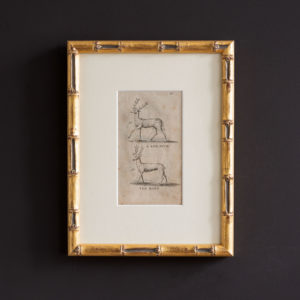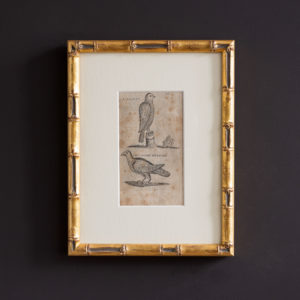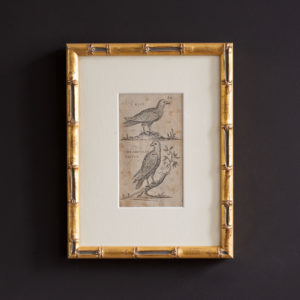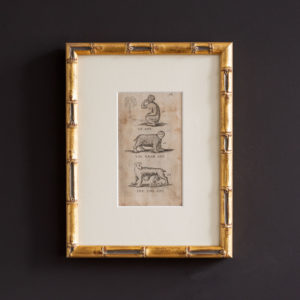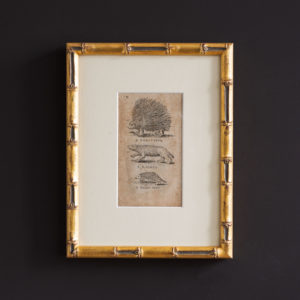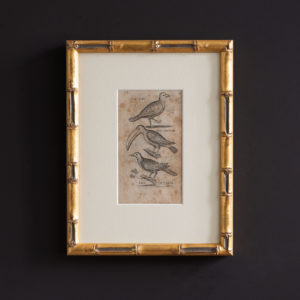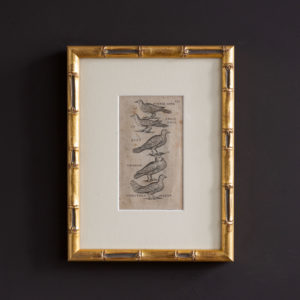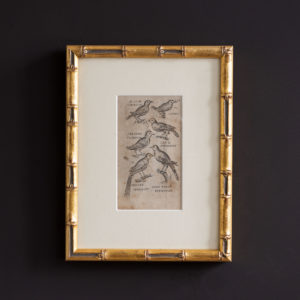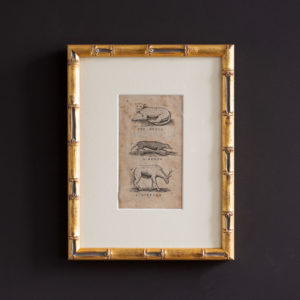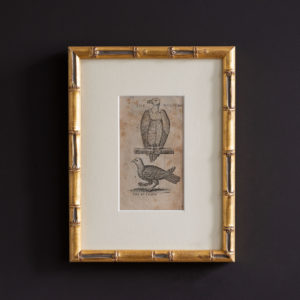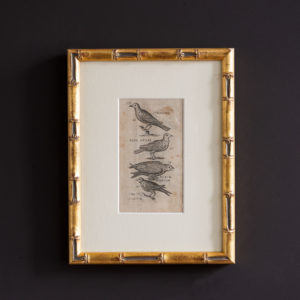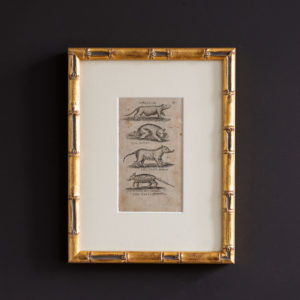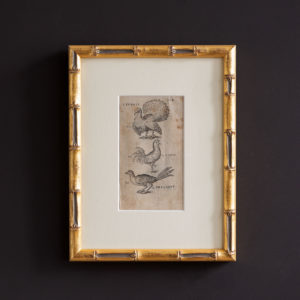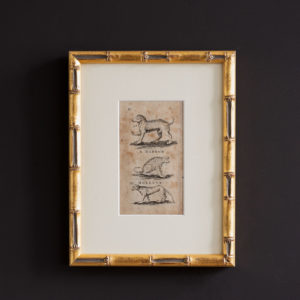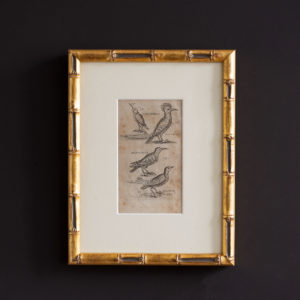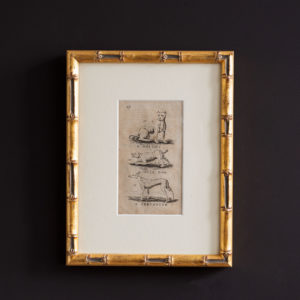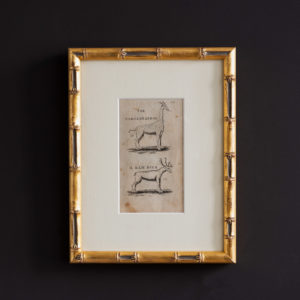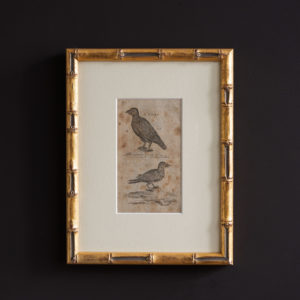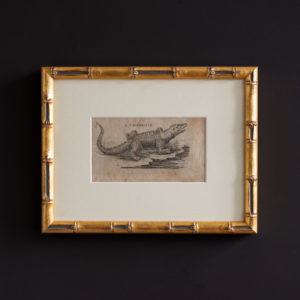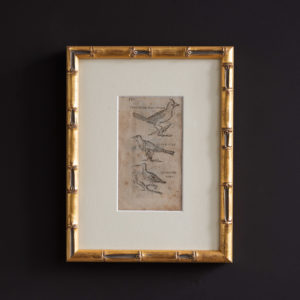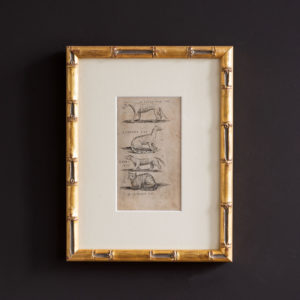104 items found
Page 1 of 2
-
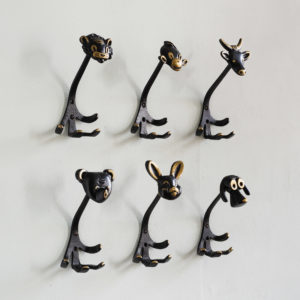
Set of Walter Bosse coat hooks
£1,500 the set -
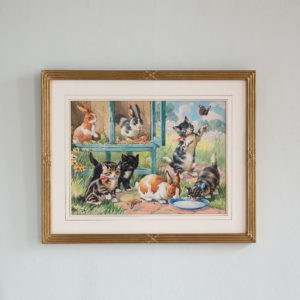
Kittens and Rabbits
£420 -
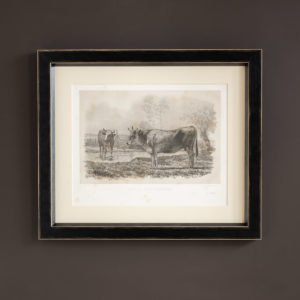
Original lithographs of Cattle Breeds published 1862, ‘Vache Parthenaise’,
£300 eachOriginal lithographs of Cattle Breeds published 1862, ‘Vache Parthenaise’,
Printed by Lemercier of Paris.£300 each -
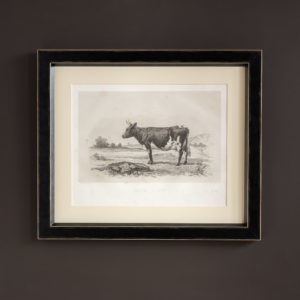
Original lithographs of Cattle Breeds published 1862, ‘Vache D’Ayr’,
£300 eachOriginal lithographs of Cattle Breeds published 1862, ‘Vache D’Ayr’,
Printed by Lemercier of Paris.£300 each -
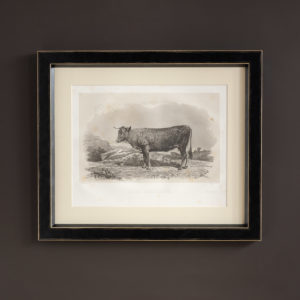
Original lithographs of Cattle Breeds published 1862, ‘Vache Garonnaise’,
£300 eachOriginal lithographs of Cattle Breeds published 1862, ‘Vache Garonnaise’,
Printed by Lemercier of Paris.£300 each -
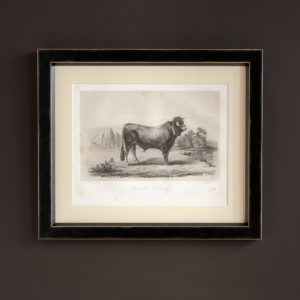
Original lithographs of Cattle Breeds published 1862, ‘Taureau Bazadais’,
£300 eachOriginal lithographs of Cattle Breeds published 1862, ‘Taureau Bazadais’,
Printed by Lemercier of Paris.£300 each -
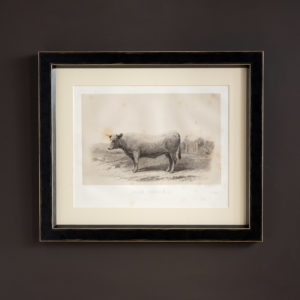
Original lithographs of Cattle Breeds published 1862, ‘Vache Charolaise’,
£300 eachOriginal lithographs of Cattle Breeds published 1862, ‘Vache Charolaise’,
Printed by Lemercier of Paris.£300 each -
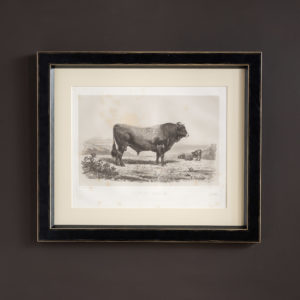
Original lithographs of Cattle Breeds published 1862, ‘Taureau Gascon’,
£300 eachOriginal lithographs of Cattle Breeds published 1862, ‘Taureau Gascon’,
Printed by Lemercier of Paris.£300 each -
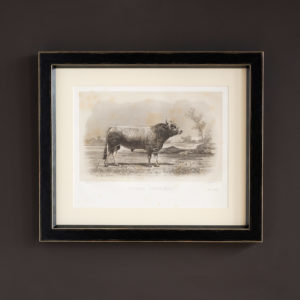
Original lithographs of Cattle Breeds published 1862, ‘Taureau Parthenais’,
£300 eachOriginal lithographs of Cattle Breeds published 1862, ‘Taureau Parthenais’,
Printed by Lemercier of Paris.£300 each -
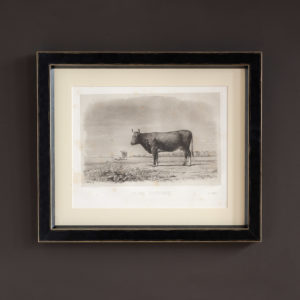
Original lithographs of Cattle Breeds published 1862, ‘Vache Bretonne’,
£300 eachOriginal lithographs of Cattle Breeds published 1862, ‘Vache Bretonne’,
Printed by Lemercier of Paris.£300 each -

Original lithographs of Cattle Breeds published 1862, ‘Taureau Garonnais’,
£300 eachOriginal lithographs of Cattle Breeds published 1862, ‘Taureau Garonnais’,
Printed by Lemercier of Paris.£300 each -
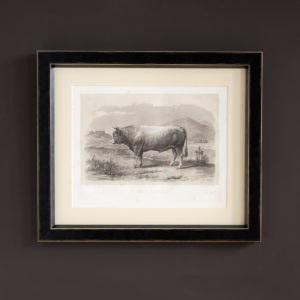
Original lithographs of Cattle Breeds published 1862, ‘Taureau Limousin’,
£300 eachOriginal lithographs of Cattle Breeds published 1862, ‘Taureau Limousin’,
Printed by Lemercier of Paris.£300 each -
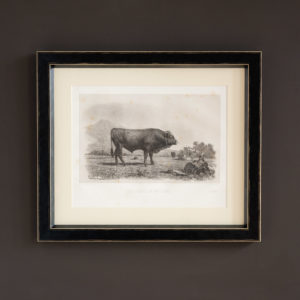
Original lithographs of Cattle Breeds published 1862, ‘Taureau D’Aubrac’,
£300 eachOriginal lithographs of Cattle Breeds published 1862, ‘Taureau D’Aubrac’,
Printed by Lemercier of Paris.£300 each -
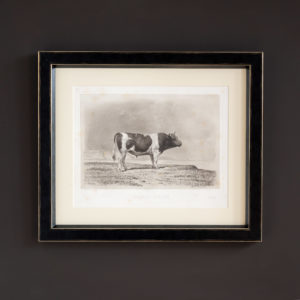
Original lithographs of Cattle Breeds published 1862, ‘Taureau Breton’,
£300 eachOriginal lithographs of Cattle Breeds published 1862, ‘Taureau Breton’,
Printed by Lemercier of Paris.£300 each -
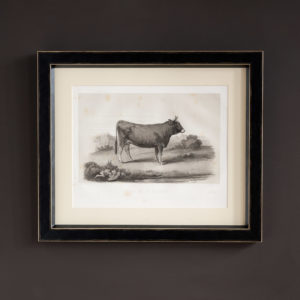
Original lithographs of Cattle Breeds published 1862, ‘Vache D’Aubrac’,
£300 eachOriginal lithographs of Cattle Breeds published 1862, ‘Vache D’Aubrac’,
Printed by Lemercier of Paris.£300 each -
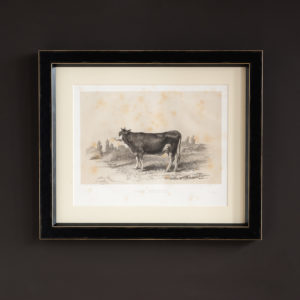
Original lithographs of Cattle Breeds published 1862, ‘Vache Mancelle’,
£300 eachOriginal lithographs of Cattle Breeds published 1862, ‘Vache Mancelle’,
Printed by Lemercier of Paris.£300 each -
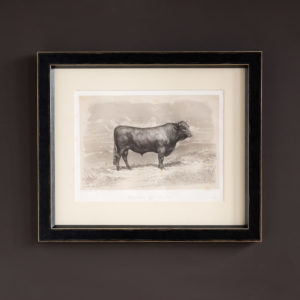
Original lithographs of Cattle Breeds published 1862, ‘Taureau de Salers’,
£300 eachOriginal lithographs of Cattle Breeds published 1862, ‘Taureau de Salers’,
Printed by Lemercier of Paris.£300 each -
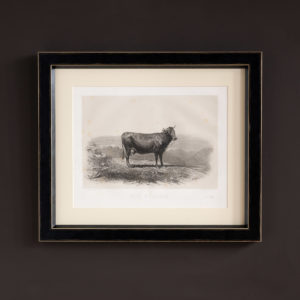
Original lithographs of Cattle Breeds published 1862, ‘Vache D’Oberhasli’,
£300 eachOriginal lithographs of Cattle Breeds published 1862, ‘Vache D’Oberhasli’,
Printed by Lemercier of Paris.£300 each -
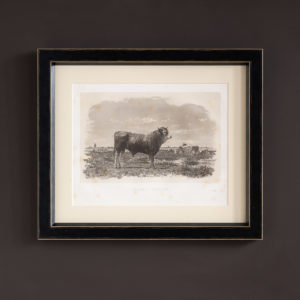
Original lithographs of Cattle Breeds published 1862, ‘Taureau Landais’,
£300 eachOriginal lithographs of Cattle Breeds published 1862, ‘Taureau Landais’,
Printed by Lemercier of Paris.£300 each -
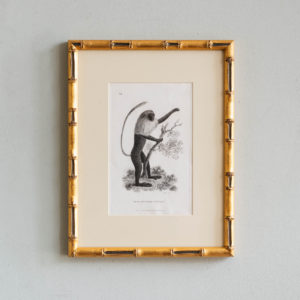
Monkeys – Full-Bottom Monkey,
£260 EachMonkeys – Full-Bottom Monkey,
The English Encyclopaedia was published in 1802 by George Kearsley and it gave an unusual insight into early 19th century new discoveries in zoology.£260 Each -
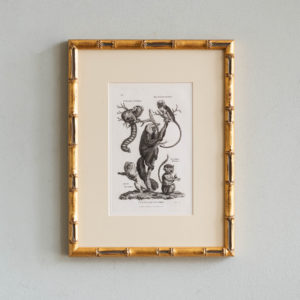
Monkeys – Striated Monkey, Red Tailed-Monkey,
£260 EachMonkeys – Striated Monkey, Red Tailed-Monkey,
The English Encyclopaedia was published in 1802 by George Kearsley and it gave an unusual insight into early 19th century new discoveries in zoology.£260 Each -
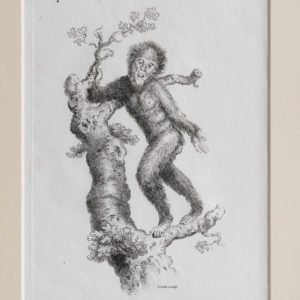
Monkeys – Oran Otan
£260 EachMonkeys – Oran Otan
The English Encyclopaedia was published in 1802 by George Kearsley and it gave an unusual insight into early 19th century new discoveries in zoology.£260 Each -
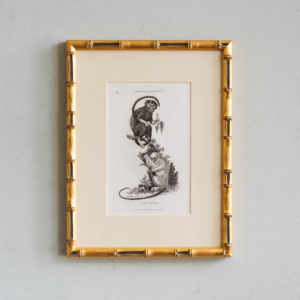
Monkeys – Great-Eared Monkey, and Fair Monkey,
£260 EachMonkeys – Great-Eared Monkey, and Fair Monkey,
The English Encyclopaedia was published in 1802 by George Kearsley and it gave an unusual insight into early 19th century new discoveries in zoology.£260 Each -
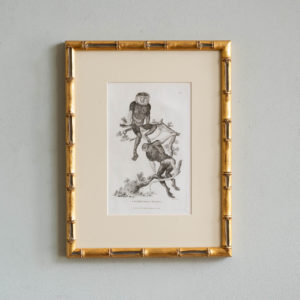
Monkeys – Cochinchina Monkey,
£260 EachMonkeys – Cochinchina Monkey,
The English Encyclopaedia was published in 1802 by George Kearsley and it gave an unusual insight into early 19th century new discoveries in zoology.£260 Each -
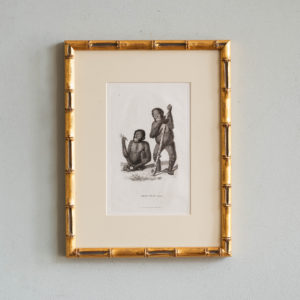
Monkeys – Oran Otan,
£260 EachMonkeys – Oran Otan,
The English Encyclopaedia was published in 1802 by George Kearsley and it gave an unusual insight into early 19th century new discoveries in zoology.£260 Each -
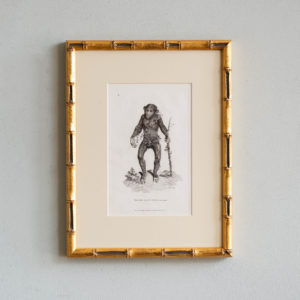
Monkeys – Black Oran-Otan,
£260 EachMonkeys – Black Oran-Otan,
The English Encyclopaedia was published in 1802 by George Kearsley and it gave an unusual insight into early 19th century new discoveries in zoology.£260 Each -
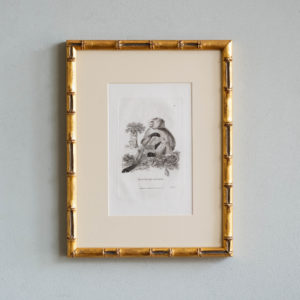
Monkeys – Dog-Faced Baboon,
£260 EachMonkeys – Dog-Faced Baboon,
The English Encyclopaedia was published in 1802 by George Kearsley and it gave an unusual insight into early 19th century new discoveries in zoology.£260 Each -
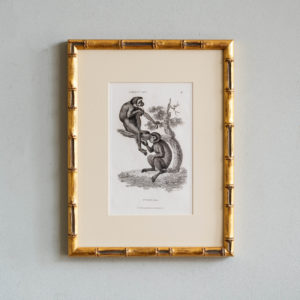
Monkeys – Pygmy Ape, and Alpinus Ape,
£260 EachMonkeys – Pygmy Ape, and Alpinus Ape,
The English Encyclopaedia was published in 1802 by George Kearsley and it gave an unusual insight into early 19th century new discoveries in zoology.£260 Each -
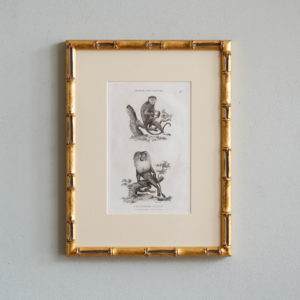
Monkeys – Hare-Lipped Monkey, and Lion-Tailed Monkey,
£260 EachMonkeys – Hare-Lipped Monkey, and Lion-Tailed Monkey,
The English Encyclopaedia was published in 1802 by George Kearsley and it gave an unusual insight into early 19th century new discoveries in zoology.£260 Each -
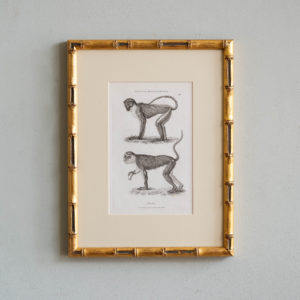
Monkeys – Spotted, or Diana Monkey and Mona,
£260 EachMonkeys – Spotted, or Diana Monkey and Mona,
The English Encyclopaedia was published in 1802 by George Kearsley and it gave an unusual insight into early 19th century new discoveries in zoology.£260 Each -
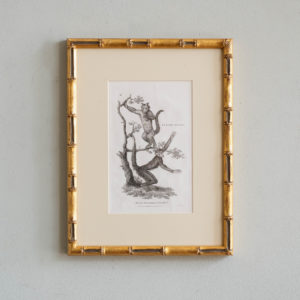
Monkeys – Horned Monkey and Four-Fingered Monkey
£260 EachMonkeys – Horned Monkey and Four-Fingered Monkey
The English Encyclopaedia was published in 1802 by George Kearsley and it gave an unusual insight into early 19th century new discoveries in zoology.£260 Each -
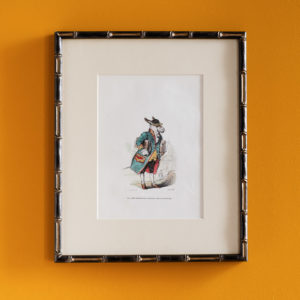
Public and Private Life of Animals, by J. J. Grandville, ‘Les savants envoyèrent un académicien…’,
£220 eachPublic and Private Life of Animals, by J. J. Grandville, ‘Les savants envoyèrent un académicien…’,
First published in France, these prints are based on the drawings of the famed caricaturist J. J. Grandville. Born Jean Ignace Isidore Gérard, Gradville; he fought on the barricades during the revolution of 1830 which dethroned Charles X, the last Bourban king. It was during this period that his cartoons appeared in two of the most famous satirical journals of the time; Le Charivari and Le Caricature, but in 1835 these publications were suppressed by the government of Louis-Philippe. This event extinguished his income and means of political expression and forced him to start making a living by book illustration. The ‘Public and Private Life of Animals’ allowed him to criticise society and its effect on individuals through one of the oldest narrative types; the animal fable. His caricaturist’s skills combined the human and animal characteristics giving him a vehicle of expression as to what was not permissible in ‘Society’ but was perfectly acceptable when the material was presented as humorous or satirical.£220 each -
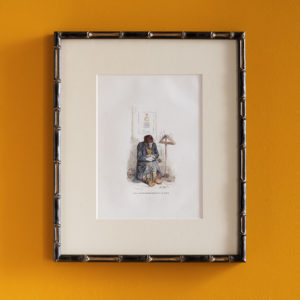
Public and Private Life of Animals, by J. J. Grandville, ‘un rat d’église’,
£220 eachPublic and Private Life of Animals, by J. J. Grandville, ‘un rat d’église’,
First published in France, these prints are based on the drawings of the famed caricaturist J. J. Grandville. Born Jean Ignace Isidore Gérard, Gradville; he fought on the barricades during the revolution of 1830 which dethroned Charles X, the last Bourban king. It was during this period that his cartoons appeared in two of the most famous satirical journals of the time; Le Charivari and Le Caricature, but in 1835 these publications were suppressed by the government of Louis-Philippe. This event extinguished his income and means of political expression and forced him to start making a living by book illustration. The ‘Public and Private Life of Animals’ allowed him to criticise society and its effect on individuals through one of the oldest narrative types; the animal fable. His caricaturist’s skills combined the human and animal characteristics giving him a vehicle of expression as to what was not permissible in ‘Society’ but was perfectly acceptable when the material was presented as humorous or satirical.£220 each -
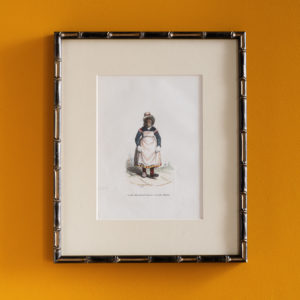
Public and Private Life of Animals, by J. J. Grandville, ‘la plus jolie villageoise’,
£220 eachPublic and Private Life of Animals, by J. J. Grandville, ‘la plus jolie villageoise’,
First published in France, these prints are based on the drawings of the famed caricaturist J. J. Grandville. Born Jean Ignace Isidore Gérard, Gradville; he fought on the barricades during the revolution of 1830 which dethroned Charles X, the last Bourban king. It was during this period that his cartoons appeared in two of the most famous satirical journals of the time; Le Charivari and Le Caricature, but in 1835 these publications were suppressed by the government of Louis-Philippe. This event extinguished his income and means of political expression and forced him to start making a living by book illustration. The ‘Public and Private Life of Animals’ allowed him to criticise society and its effect on individuals through one of the oldest narrative types; the animal fable. His caricaturist’s skills combined the human and animal characteristics giving him a vehicle of expression as to what was not permissible in ‘Society’ but was perfectly acceptable when the material was presented as humorous or satirical.£220 each -
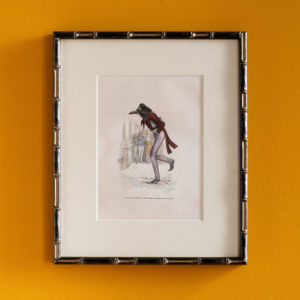
Public and Private Life of Animals, by J. J. Grandville, ‘Les études sont pénibles…’,
£220 eachPublic and Private Life of Animals, by J. J. Grandville, ‘Les études sont pénibles…’,
First published in France, these prints are based on the drawings of the famed caricaturist J. J. Grandville. Born Jean Ignace Isidore Gérard, Gradville; he fought on the barricades during the revolution of 1830 which dethroned Charles X, the last Bourban king. It was during this period that his cartoons appeared in two of the most famous satirical journals of the time; Le Charivari and Le Caricature, but in 1835 these publications were suppressed by the government of Louis-Philippe. This event extinguished his income and means of political expression and forced him to start making a living by book illustration. The ‘Public and Private Life of Animals’ allowed him to criticise society and its effect on individuals through one of the oldest narrative types; the animal fable. His caricaturist’s skills combined the human and animal characteristics giving him a vehicle of expression as to what was not permissible in ‘Society’ but was perfectly acceptable when the material was presented as humorous or satirical.£220 each -
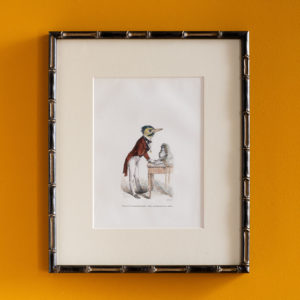
Public and Private Life of Animals, by J. J. Grandville, ‘Grand savant’,
£220 eachPublic and Private Life of Animals, by J. J. Grandville, ‘Grand savant’,
First published in France, these prints are based on the drawings of the famed caricaturist J. J. Grandville. Born Jean Ignace Isidore Gérard, Gradville; he fought on the barricades during the revolution of 1830 which dethroned Charles X, the last Bourban king. It was during this period that his cartoons appeared in two of the most famous satirical journals of the time; Le Charivari and Le Caricature, but in 1835 these publications were suppressed by the government of Louis-Philippe. This event extinguished his income and means of political expression and forced him to start making a living by book illustration. The ‘Public and Private Life of Animals’ allowed him to criticise society and its effect on individuals through one of the oldest narrative types; the animal fable. His caricaturist’s skills combined the human and animal characteristics giving him a vehicle of expression as to what was not permissible in ‘Society’ but was perfectly acceptable when the material was presented as humorous or satirical.£220 each -
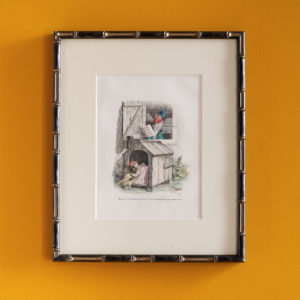
Public and Private Life of Animals, by J. J. Grandville, ‘Quand on ne tient pas à voir lever l’aurore…’,
£220 eachPublic and Private Life of Animals, by J. J. Grandville, ‘Quand on ne tient pas à voir lever l’aurore…’,
First published in France, these prints are based on the drawings of the famed caricaturist J. J. Grandville. Born Jean Ignace Isidore Gérard, Gradville; he fought on the barricades during the revolution of 1830 which dethroned Charles X, the last Bourban king. It was during this period that his cartoons appeared in two of the most famous satirical journals of the time; Le Charivari and Le Caricature, but in 1835 these publications were suppressed by the government of Louis-Philippe. This event extinguished his income and means of political expression and forced him to start making a living by book illustration. The ‘Public and Private Life of Animals’ allowed him to criticise society and its effect on individuals through one of the oldest narrative types; the animal fable. His caricaturist’s skills combined the human and animal characteristics giving him a vehicle of expression as to what was not permissible in ‘Society’ but was perfectly acceptable when the material was presented as humorous or satirical.£220 each -
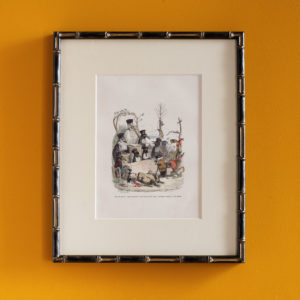
Public and Private Life of Animals, by J. J. Grandville, ‘L’unfortuné crapaud’,
£220 eachPublic and Private Life of Animals, by J. J. Grandville, ‘L’unfortuné crapaud’,
First published in France, these prints are based on the drawings of the famed caricaturist J. J. Grandville. Born Jean Ignace Isidore Gérard, Gradville; he fought on the barricades during the revolution of 1830 which dethroned Charles X, the last Bourban king. It was during this period that his cartoons appeared in two of the most famous satirical journals of the time; Le Charivari and Le Caricature, but in 1835 these publications were suppressed by the government of Louis-Philippe. This event extinguished his income and means of political expression and forced him to start making a living by book illustration. The ‘Public and Private Life of Animals’ allowed him to criticise society and its effect on individuals through one of the oldest narrative types; the animal fable. His caricaturist’s skills combined the human and animal characteristics giving him a vehicle of expression as to what was not permissible in ‘Society’ but was perfectly acceptable when the material was presented as humorous or satirical.£220 each -
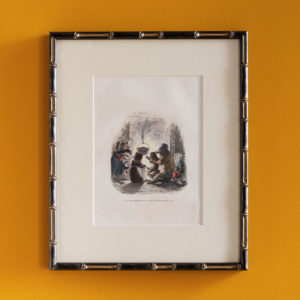
Public and Private Life of Animals, by J. J. Grandville, ‘Nous vivons entre nous’,
£220 eachPublic and Private Life of Animals, by J. J. Grandville, ‘Nous vivons entre nous’,
First published in France, these prints are based on the drawings of the famed caricaturist J. J. Grandville. Born Jean Ignace Isidore Gérard, Gradville; he fought on the barricades during the revolution of 1830 which dethroned Charles X, the last Bourban king. It was during this period that his cartoons appeared in two of the most famous satirical journals of the time; Le Charivari and Le Caricature, but in 1835 these publications were suppressed by the government of Louis-Philippe. This event extinguished his income and means of political expression and forced him to start making a living by book illustration. The ‘Public and Private Life of Animals’ allowed him to criticise society and its effect on individuals through one of the oldest narrative types; the animal fable. His caricaturist’s skills combined the human and animal characteristics giving him a vehicle of expression as to what was not permissible in ‘Society’ but was perfectly acceptable when the material was presented as humorous or satirical.£220 each -
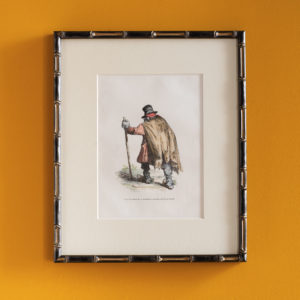
Public and Private Life of Animals, by J. J. Grandville, ‘Mendiant’,
£220 eachPublic and Private Life of Animals, by J. J. Grandville, ‘Mendiant’,
First published in France, these prints are based on the drawings of the famed caricaturist J. J. Grandville. Born Jean Ignace Isidore Gérard, Gradville; he fought on the barricades during the revolution of 1830 which dethroned Charles X, the last Bourban king. It was during this period that his cartoons appeared in two of the most famous satirical journals of the time; Le Charivari and Le Caricature, but in 1835 these publications were suppressed by the government of Louis-Philippe. This event extinguished his income and means of political expression and forced him to start making a living by book illustration. The ‘Public and Private Life of Animals’ allowed him to criticise society and its effect on individuals through one of the oldest narrative types; the animal fable. His caricaturist’s skills combined the human and animal characteristics giving him a vehicle of expression as to what was not permissible in ‘Society’ but was perfectly acceptable when the material was presented as humorous or satirical.£220 each -
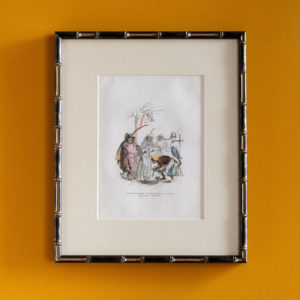
Public and Private Life of Animals, by J. J. Grandville,
£220 eachPublic and Private Life of Animals, by J. J. Grandville,
First published in France, these prints are based on the drawings of the famed caricaturist J. J. Grandville. Born Jean Ignace Isidore Gérard, Gradville; he fought on the barricades during the revolution of 1830 which dethroned Charles X, the last Bourban king. It was during this period that his cartoons appeared in two of the most famous satirical journals of the time; Le Charivari and Le Caricature, but in 1835 these publications were suppressed by the government of Louis-Philippe. This event extinguished his income and means of political expression and forced him to start making a living by book illustration. The ‘Public and Private Life of Animals’ allowed him to criticise society and its effect on individuals through one of the oldest narrative types; the animal fable. His caricaturist’s skills combined the human and animal characteristics giving him a vehicle of expression as to what was not permissible in ‘Society’ but was perfectly acceptable when the material was presented as humorous or satirical.£220 each -
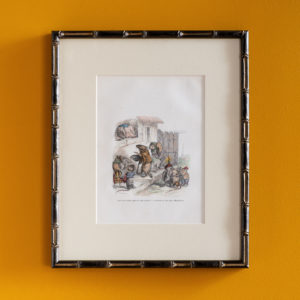
Public and Private Life of Animals, by J. J. Grandville, ‘La charite, s’il vous plait, Monseigneur’,
£220 eachPublic and Private Life of Animals, by J. J. Grandville, ‘La charite, s’il vous plait, Monseigneur’,
First published in France, these prints are based on the drawings of the famed caricaturist J. J. Grandville. Born Jean Ignace Isidore Gérard, Gradville; he fought on the barricades during the revolution of 1830 which dethroned Charles X, the last Bourban king. It was during this period that his cartoons appeared in two of the most famous satirical journals of the time; Le Charivari and Le Caricature, but in 1835 these publications were suppressed by the government of Louis-Philippe. This event extinguished his income and means of political expression and forced him to start making a living by book illustration. The ‘Public and Private Life of Animals’ allowed him to criticise society and its effect on individuals through one of the oldest narrative types; the animal fable. His caricaturist’s skills combined the human and animal characteristics giving him a vehicle of expression as to what was not permissible in ‘Society’ but was perfectly acceptable when the material was presented as humorous or satirical.£220 each -
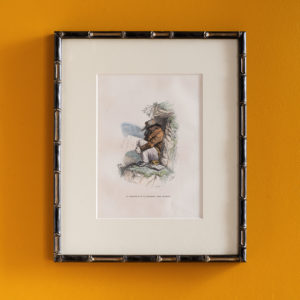
Public and Private Life of Animals, by J. J. Grandville, ‘Les occupations de ma vie contemplative’,
£220 eachPublic and Private Life of Animals, by J. J. Grandville, ‘Les occupations de ma vie contemplative’,
First published in France, these prints are based on the drawings of the famed caricaturist J. J. Grandville. Born Jean Ignace Isidore Gérard, Gradville; he fought on the barricades during the revolution of 1830 which dethroned Charles X, the last Bourban king. It was during this period that his cartoons appeared in two of the most famous satirical journals of the time; Le Charivari and Le Caricature, but in 1835 these publications were suppressed by the government of Louis-Philippe. This event extinguished his income and means of political expression and forced him to start making a living by book illustration. The ‘Public and Private Life of Animals’ allowed him to criticise society and its effect on individuals through one of the oldest narrative types; the animal fable. His caricaturist’s skills combined the human and animal characteristics giving him a vehicle of expression as to what was not permissible in ‘Society’ but was perfectly acceptable when the material was presented as humorous or satirical.£220 each -
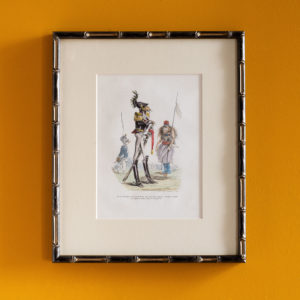
Public and Private Life of Animals, by J. J. Grandville, ‘la Sauterelle’,
£220 eachPublic and Private Life of Animals, by J. J. Grandville, ‘la Sauterelle’,
First published in France, these prints are based on the drawings of the famed caricaturist J. J. Grandville. Born Jean Ignace Isidore Gérard, Gradville; he fought on the barricades during the revolution of 1830 which dethroned Charles X, the last Bourban king. It was during this period that his cartoons appeared in two of the most famous satirical journals of the time; Le Charivari and Le Caricature, but in 1835 these publications were suppressed by the government of Louis-Philippe. This event extinguished his income and means of political expression and forced him to start making a living by book illustration. The ‘Public and Private Life of Animals’ allowed him to criticise society and its effect on individuals through one of the oldest narrative types; the animal fable. His caricaturist’s skills combined the human and animal characteristics giving him a vehicle of expression as to what was not permissible in ‘Society’ but was perfectly acceptable when the material was presented as humorous or satirical.£220 each -
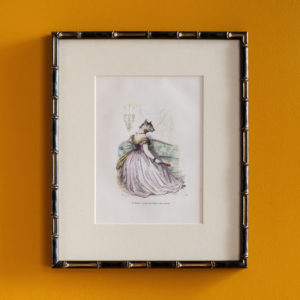
Public and Private Life of Animals, by J. J. Grandville, ‘la Louve mère de Rome’
£220 eachPublic and Private Life of Animals, by J. J. Grandville, ‘la Louve mère de Rome’
First published in France, these prints are based on the drawings of the famed caricaturist J. J. Grandville. Born Jean Ignace Isidore Gérard, Gradville; he fought on the barricades during the revolution of 1830 which dethroned Charles X, the last Bourban king. It was during this period that his cartoons appeared in two of the most famous satirical journals of the time; Le Charivari and Le Caricature, but in 1835 these publications were suppressed by the government of Louis-Philippe. This event extinguished his income and means of political expression and forced him to start making a living by book illustration. The ‘Public and Private Life of Animals’ allowed him to criticise society and its effect on individuals through one of the oldest narrative types; the animal fable. His caricaturist’s skills combined the human and animal characteristics giving him a vehicle of expression as to what was not permissible in ‘Society’ but was perfectly acceptable when the material was presented as humorous or satirical.£220 each -
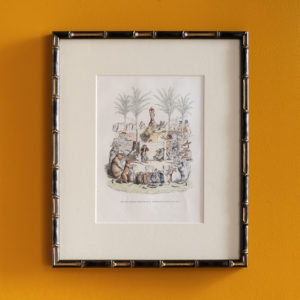
Public and Private Life of Animals, by J. J. Grandville, ‘ L’illustre orateur’,
£220 eachPublic and Private Life of Animals, by J. J. Grandville, ‘ L’illustre orateur’,
First published in France, these prints are based on the drawings of the famed caricaturist J. J. Grandville. Born Jean Ignace Isidore Gérard, Gradville; he fought on the barricades during the revolution of 1830 which dethroned Charles X, the last Bourban king. It was during this period that his cartoons appeared in two of the most famous satirical journals of the time; Le Charivari and Le Caricature, but in 1835 these publications were suppressed by the government of Louis-Philippe. This event extinguished his income and means of political expression and forced him to start making a living by book illustration. The ‘Public and Private Life of Animals’ allowed him to criticise society and its effect on individuals through one of the oldest narrative types; the animal fable. His caricaturist’s skills combined the human and animal characteristics giving him a vehicle of expression as to what was not permissible in ‘Society’ but was perfectly acceptable when the material was presented as humorous or satirical.£220 each -
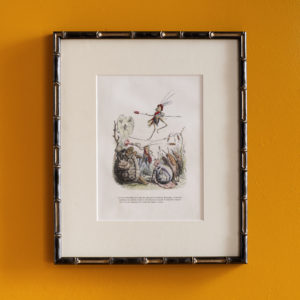
Public and Private Life of Animals, by J. J. Grandville, ‘ Le triomphant Criquet’,
£220 eachPublic and Private Life of Animals, by J. J. Grandville, ‘ Le triomphant Criquet’,
First published in France, these prints are based on the drawings of the famed caricaturist J. J. Grandville. Born Jean Ignace Isidore Gérard, Gradville; he fought on the barricades during the revolution of 1830 which dethroned Charles X, the last Bourban king. It was during this period that his cartoons appeared in two of the most famous satirical journals of the time; Le Charivari and Le Caricature, but in 1835 these publications were suppressed by the government of Louis-Philippe. This event extinguished his income and means of political expression and forced him to start making a living by book illustration. The ‘Public and Private Life of Animals’ allowed him to criticise society and its effect on individuals through one of the oldest narrative types; the animal fable. His caricaturist’s skills combined the human and animal characteristics giving him a vehicle of expression as to what was not permissible in ‘Society’ but was perfectly acceptable when the material was presented as humorous or satirical.£220 each -
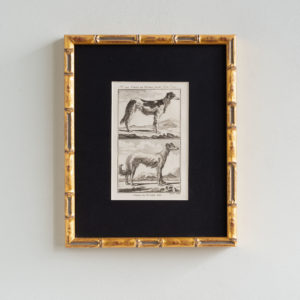
18th Century French Engravings of Dogs
£175 each18th Century French Engravings of Dogs
Published for, Histoire naturelle, générale et particulière (1749–1804), which was the first modern attempt to systematically present all existing knowledge in the fields of natural history, geology, and anthropology.£175 each -
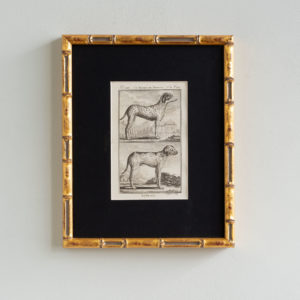
18th Century French Engravings of Dogs
£175 each18th Century French Engravings of Dogs
Published for, Histoire naturelle, générale et particulière (1749–1804), which was the first modern attempt to systematically present all existing knowledge in the fields of natural history, geology, and anthropology.£175 each -
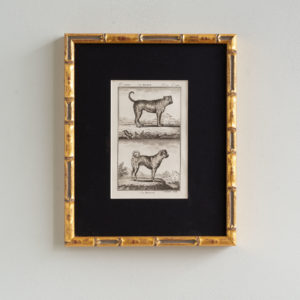
18th Century French Engravings of Dogs
£175 each18th Century French Engravings of Dogs
Published for, Histoire naturelle, générale et particulière (1749–1804), which was the first modern attempt to systematically present all existing knowledge in the fields of natural history, geology, and anthropology.£175 each -
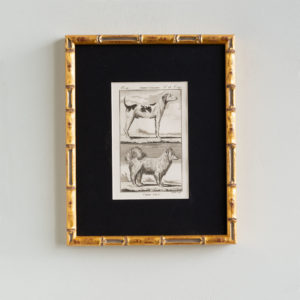
18th Century French Engravings of Dogs
£175 each18th Century French Engravings of Dogs
Published for, Histoire naturelle, générale et particulière (1749–1804), which was the first modern attempt to systematically present all existing knowledge in the fields of natural history, geology, and anthropology.£175 each -

De Buffon, 18th Century natural history,
£150 eachDe Buffon, 18th Century natural history,
Animal prints, based on he work of Georges-Louis Leclerc, count de Buffon, who attempted to systematically present all existing knowledge in the fields of natural history, geology, and anthropology in a single publication. Published c1740, Latin and German text. Presented in faux bamboo frames. 'Didelphys Orientalis Pall.'£150 each -
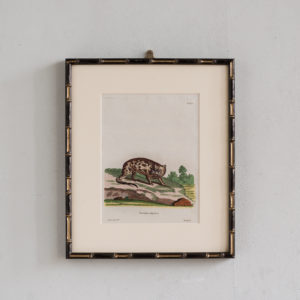
De Buffon, 18th Century natural history,
£150 eachDe Buffon, 18th Century natural history,
Animal prints, based on he work of Georges-Louis Leclerc, count de Buffon, who attempted to systematically present all existing knowledge in the fields of natural history, geology, and anthropology in a single publication. Published c1740, Latin and German text. Presented in faux bamboo frames. 'Viverra tigrina'.£150 each -
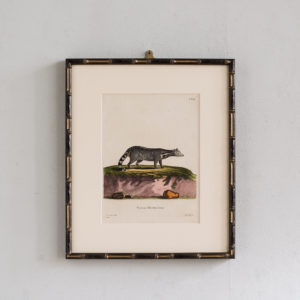
De Buffon, 18th Century natural history,
£150 eachDe Buffon, 18th Century natural history,
Animal prints, based on he work of Georges-Louis Leclerc, count de Buffon, who attempted to systematically present all existing knowledge in the fields of natural history, geology, and anthropology in a single publication. Published c1740, Latin and German text. Presented in faux bamboo frames. 'Viverra Zibetha Linn'.£150 each -
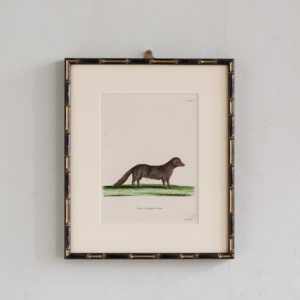
De Buffon, 18th Century natural history,
£150 eachDe Buffon, 18th Century natural history,
Animal prints, based on he work of Georges-Louis Leclerc, count de Buffon, who attempted to systematically present all existing knowledge in the fields of natural history, geology, and anthropology in a single publication. Published c1740, Latin and German text. Presented in faux bamboo frames. 'Canis Lagopus Linn.'.£150 each -
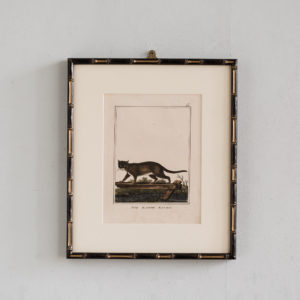
De Buffon, 18th Century natural history,
£150 eachDe Buffon, 18th Century natural history,
Animal prints, based on he work of Georges-Louis Leclerc, count de Buffon, who attempted to systematically present all existing knowledge in the fields of natural history, geology, and anthropology in a single publication. Published c1740, Latin and German text. Presented in faux bamboo frames. 'Die Zahme Katze'.£150 each -
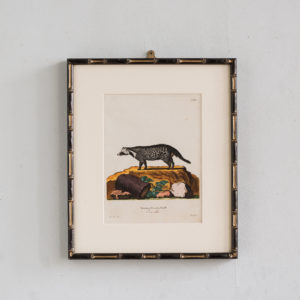
De Buffon, 18th Century natural history,
£150 eachDe Buffon, 18th Century natural history,
Animal prints, based on he work of Georges-Louis Leclerc, count de Buffon, who attempted to systematically present all existing knowledge in the fields of natural history, geology, and anthropology in a single publication. Published c1740, Latin and German text. Presented in faux bamboo frames. 'Viverra Civetta Buff.'.£150 each -
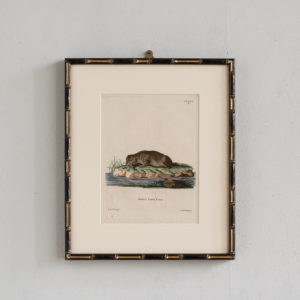
De Buffon, 18th Century natural history,
£150 eachDe Buffon, 18th Century natural history,
Animal prints, based on he work of Georges-Louis Leclerc, count de Buffon, who attempted to systematically present all existing knowledge in the fields of natural history, geology, and anthropology in a single publication. Published c1740, Latin and German text. Presented in faux bamboo frames. 'Mustela Lutra Linn.'.£150 each -
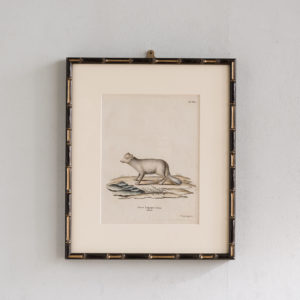
De Buffon, 18th Century natural history,
£150 eachDe Buffon, 18th Century natural history,
Animal prints, based on he work of Georges-Louis Leclerc, count de Buffon, who attempted to systematically present all existing knowledge in the fields of natural history, geology, and anthropology in a single publication. Published c1740, Latin and German text. Presented in faux bamboo frames. 'Canis Lagopus Linn.'.£150 each -
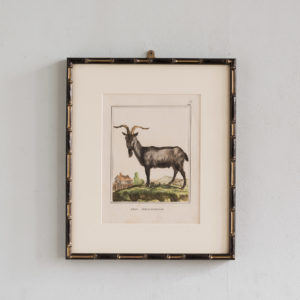
De Buffon, 18th Century natural history,
£150 eachDe Buffon, 18th Century natural history,
Animal prints, based on he work of Georges-Louis Leclerc, count de Buffon, who attempted to systematically present all existing knowledge in the fields of natural history, geology, and anthropology in a single publication. Published c1740, Latin and German text. Presented in faux bamboo frames. 'Der Ziegenbock.£150 each -
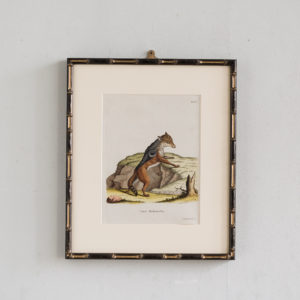
De Buffon, 18th Century natural history,
£150 eachDe Buffon, 18th Century natural history,
Animal prints, based on he work of Georges-Louis Leclerc, count de Buffon, who attempted to systematically present all existing knowledge in the fields of natural history, geology, and anthropology in a single publication. Published c1740, Latin and German text. Presented in faux bamboo frames. 'Canis Mesomelas.'.£150 each -
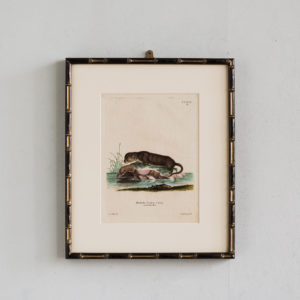
De Buffon, 18th Century natural history,
£150 eachDe Buffon, 18th Century natural history,
Animal prints, based on he work of Georges-Louis Leclerc, count de Buffon, who attempted to systematically present all existing knowledge in the fields of natural history, geology, and anthropology in a single publication. Published c1740, Latin and German text. Presented in faux bamboo frames. 'Mustela Lutra Linn. canadensis'.£150 each -

De Buffon, 18th Century natural history,
£150 eachDe Buffon, 18th Century natural history,
Animal prints, based on he work of Georges-Louis Leclerc, count de Buffon, who attempted to systematically present all existing knowledge in the fields of natural history, geology, and anthropology in a single publication. Published c1740, Latin and German text. Presented in faux bamboo frames. 'Canis Lupus Linn.'.£150 each -
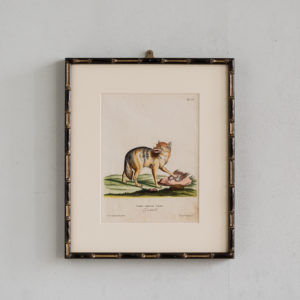
De Buffon, 18th Century natural history,
£150 eachDe Buffon, 18th Century natural history,
Animal prints, based on he work of Georges-Louis Leclerc, count de Buffon, who attempted to systematically present all existing knowledge in the fields of natural history, geology, and anthropology in a single publication. Published c1740, Latin and German text. Presented in faux bamboo frames. 'Canis aureus Linn'.£150 each -
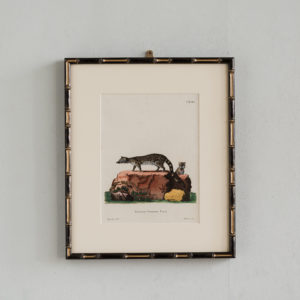
De Buffon, 18th Century natural history,
£150 eachDe Buffon, 18th Century natural history,
Animal prints, based on he work of Georges-Louis Leclerc, count de Buffon, who attempted to systematically present all existing knowledge in the fields of natural history, geology, and anthropology in a single publication. Published c1740, Latin and German text. Presented in faux bamboo frames. 'Viverra Genetta Linn'.£150 each -
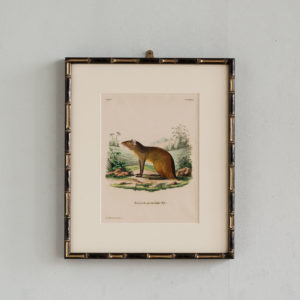
De Buffon, 18th Century natural history,
£150 eachDe Buffon, 18th Century natural history,
Animal prints, based on he work of Georges-Louis Leclerc, count de Buffon, who attempted to systematically present all existing knowledge in the fields of natural history, geology, and anthropology in a single publication. Published c1740, Latin and German text. Presented in faux bamboo frames. 'Dasyprocta prymnolopha Wglr.'.£150 each -

De Buffon, 18th Century natural history,
£150 eachDe Buffon, 18th Century natural history,
Animal prints, based on he work of Georges-Louis Leclerc, count de Buffon, who attempted to systematically present all existing knowledge in the fields of natural history, geology, and anthropology in a single publication. Published c1740, Latin and German text. Presented in faux bamboo frames. 'Phalangista Petaurus'.£150 each -
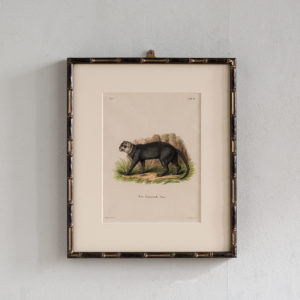
De Buffon, 18th Century natural history,
£150 eachDe Buffon, 18th Century natural history,
Animal prints, based on he work of Georges-Louis Leclerc, count de Buffon, who attempted to systematically present all existing knowledge in the fields of natural history, geology, and anthropology in a single publication. Published c1740, Latin and German text. Presented in faux bamboo frames. 'Felis Yaguarondi Azar'.£150 each -
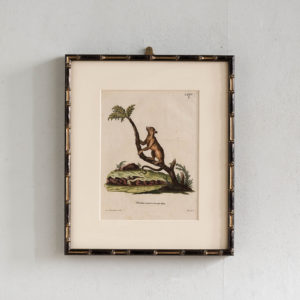
De Buffon, 18th Century natural history,
£150 eachDe Buffon, 18th Century natural history,
Animal prints, based on he work of Georges-Louis Leclerc, count de Buffon, who attempted to systematically present all existing knowledge in the fields of natural history, geology, and anthropology in a single publication. Published c1740, Latin and German text. Presented in faux bamboo frames. 'Viverra caudivolvula Pali'.£150 each -
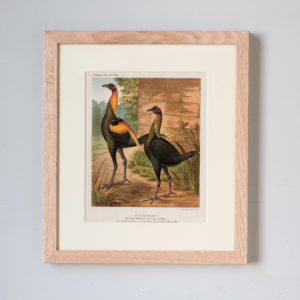
Wright’s Poultry, original chromolithograph from 1873
£130 eachWright’s Poultry, original chromolithograph from 1873
Published by Cassells c1873. Framed in natural ash. 'Brown-Breasted Red Game'£130 each -
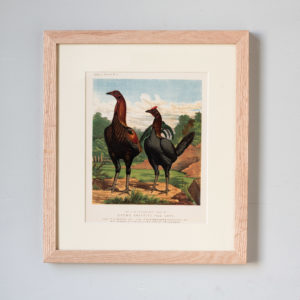
Wright’s Poultry, original chromolithograph from 1873
£130 eachWright’s Poultry, original chromolithograph from 1873
Published by Cassells c1873. Framed in natural ash. 'Brown-Breasted Red Game'£130 each -
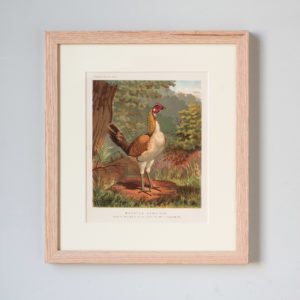
Wright’s Poultry, original chromolithograph from 1873
£130 eachWright’s Poultry, original chromolithograph from 1873
Published by Cassells c1873. Framed in natural ash. 'Wheaten Game Hen'£130 each -
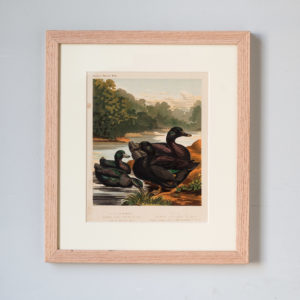
Wright’s Poultry, original chromolithograph from 1873
£130 eachWright’s Poultry, original chromolithograph from 1873
Published by Cassells c1873. Framed in natural ash. 'Black East India Ducks, Black Cayuga Ducks'£130 each -
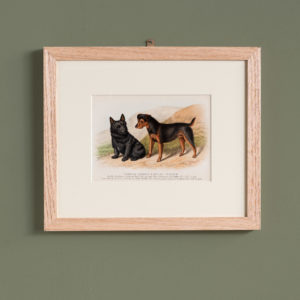
British Dogs 1882 – Scotch Terrier & Welsh Terrier,
£120 each -
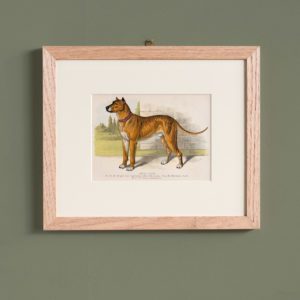
British Dogs 1882 – Great Dane
£120 each -

British Dogs 1882 – Gordon Setter,
£120 each -
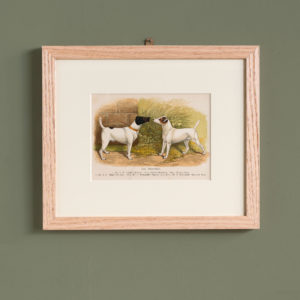
British Dogs 1882 – Fox Terriers,
£120 each
Featured Items
-
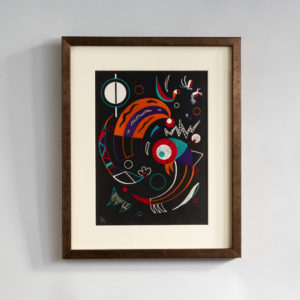
Comets by Wassily Kandinsky, Verve Vol. 1 / No. 2.
£800Comets by Wassily Kandinsky, Verve Vol. 1 / No. 2.
The Verve Review was a purposefully luxurious. It ran from 1937 to 1960, but with only 38 editions available, due to the high degree of design and editorial work dedicated to each issue. Each edition contained unique lithographic prints, commissioned by the editor, and each cover a double-page lithograph elaborated by one of the artists contained within. It was the brainchild of its editor Stratis Eleftheriades, a Greek National who moved to Paris in the early thirties to take part in the growing Modernist movement, writing under the name of Teriade.£800 -

Autumn by Abraham Rattner, Verve Vol. 1 / No. 3.
£600Autumn by Abraham Rattner, Verve Vol. 1 / No. 3.
The Verve Review was a purposefully luxurious. It ran from 1937 to 1960, but with only 38 editions available, due to the high degree of design and editorial work dedicated to each issue. Each edition contained unique lithographic prints, commissioned by the editor, and each cover a double-page lithograph elaborated by one of the artists contained within. It was the brainchild of its editor Stratis Eleftheriades, a Greek National who moved to Paris in the early thirties to take part in the growing Modernist movement, writing under the name of Teriade.£600 -
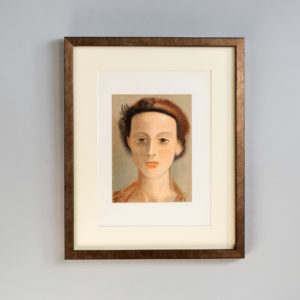
Portrait by Andre Derain, Verve Vol 2 / No. 5-6.
£800Portrait by Andre Derain, Verve Vol 2 / No. 5-6.
The Verve Review was a purposefully luxurious. It ran from 1937 to 1960, but with only 38 editions available, due to the high degree of design and editorial work dedicated to each issue. Each edition contained unique lithographic prints, commissioned by the editor, and each cover a double-page lithograph elaborated by one of the artists contained within. It was the brainchild of its editor Stratis Eleftheriades, a Greek National who moved to Paris in the early thirties to take part in the growing Modernist movement, writing under the name of Teriade.£800 -
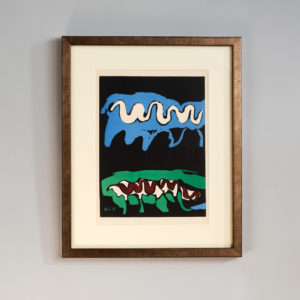
The Four Elements, Earth by Francisco Bores, Verve Vol. 1 / No. 1.
£600The Four Elements, Earth by Francisco Bores, Verve Vol. 1 / No. 1.
The Verve Review was a purposefully luxurious. It ran from 1937 to 1960, but with only 38 editions available, due to the high degree of design and editorial work dedicated to each issue. Each edition contained unique lithographic prints, commissioned by the editor, and each cover a double-page lithograph elaborated by one of the artists contained within. It was the brainchild of its editor Stratis Eleftheriades, a Greek National who moved to Paris in the early thirties to take part in the growing Modernist movement, writing under the name of Teriade.£600

